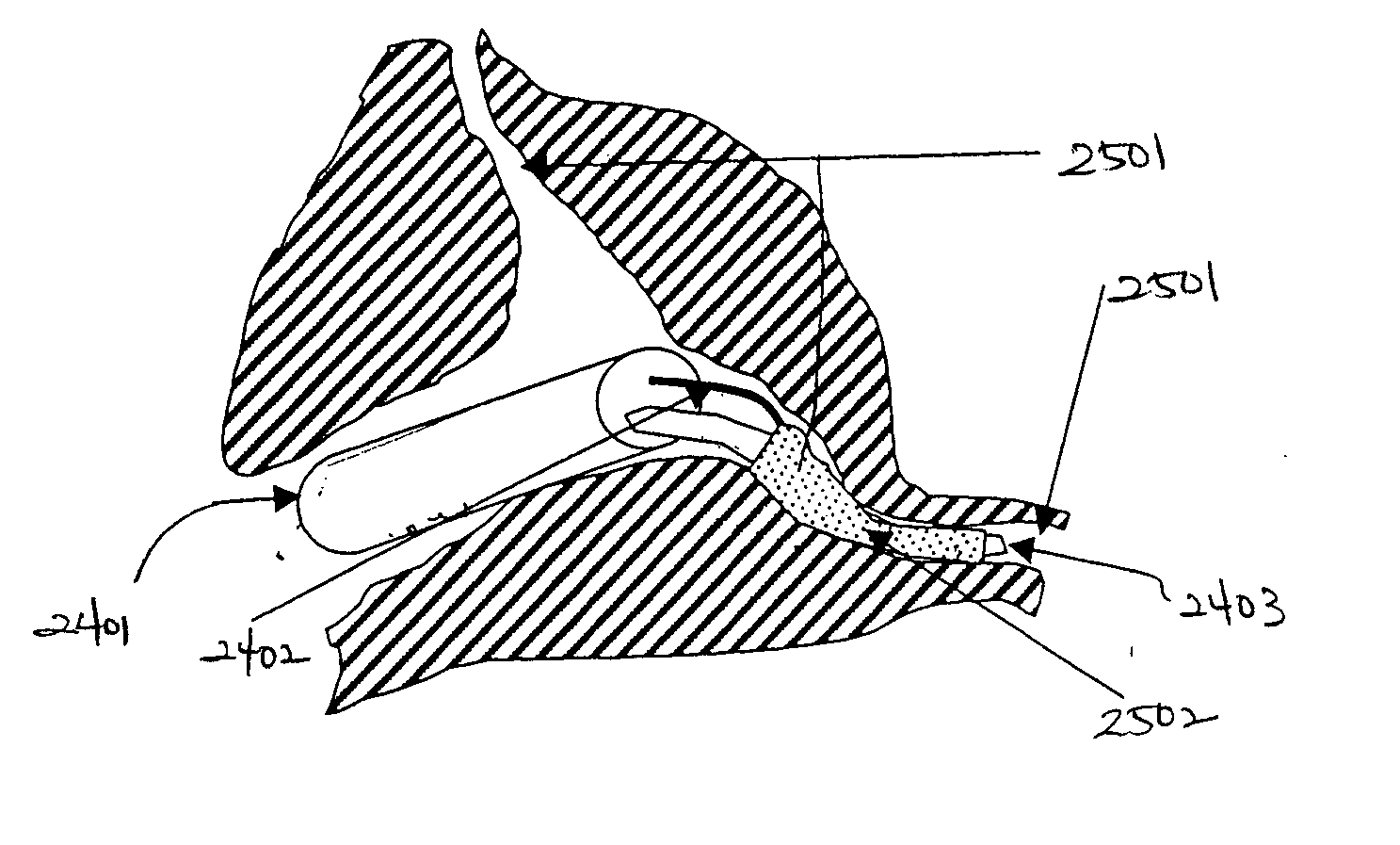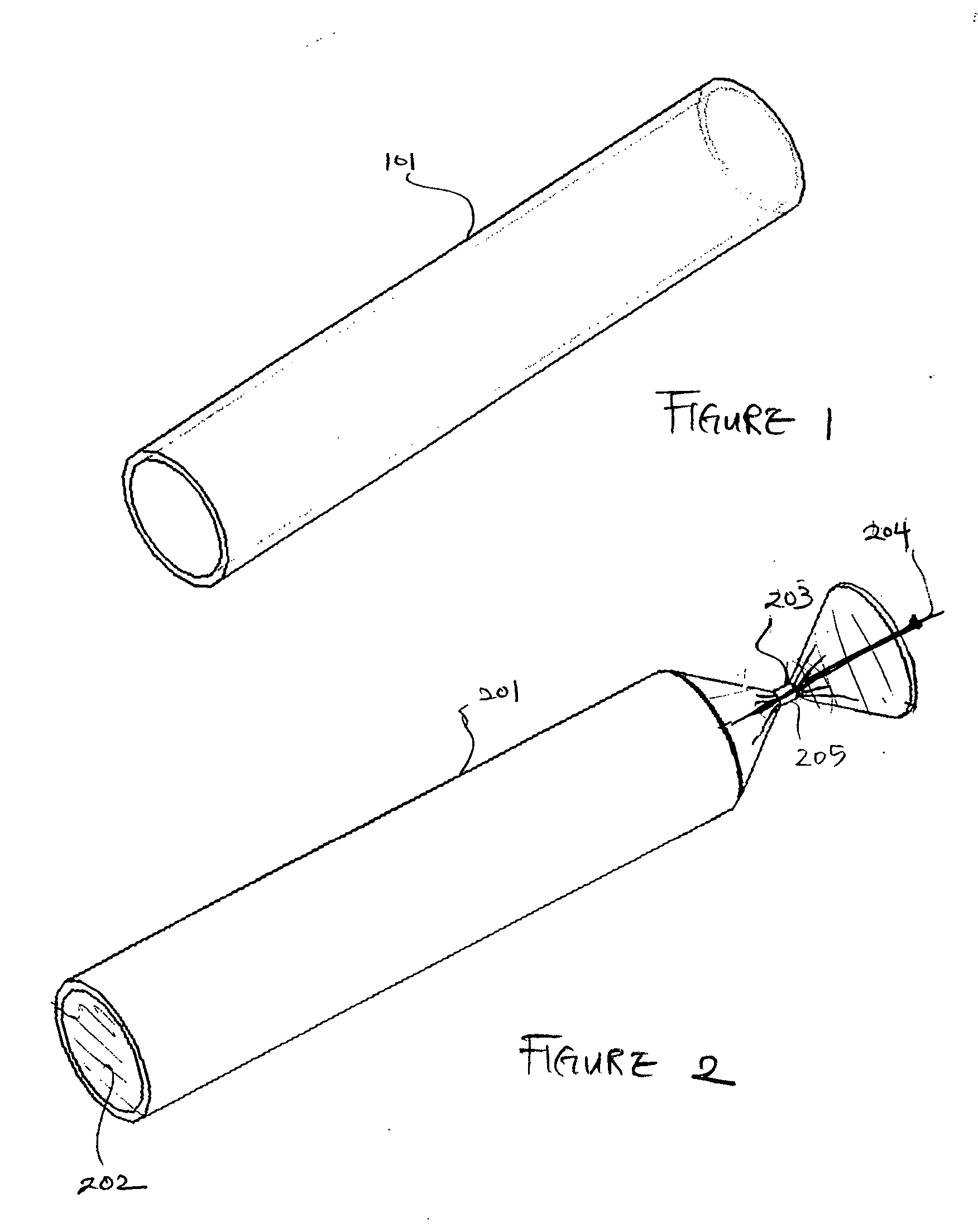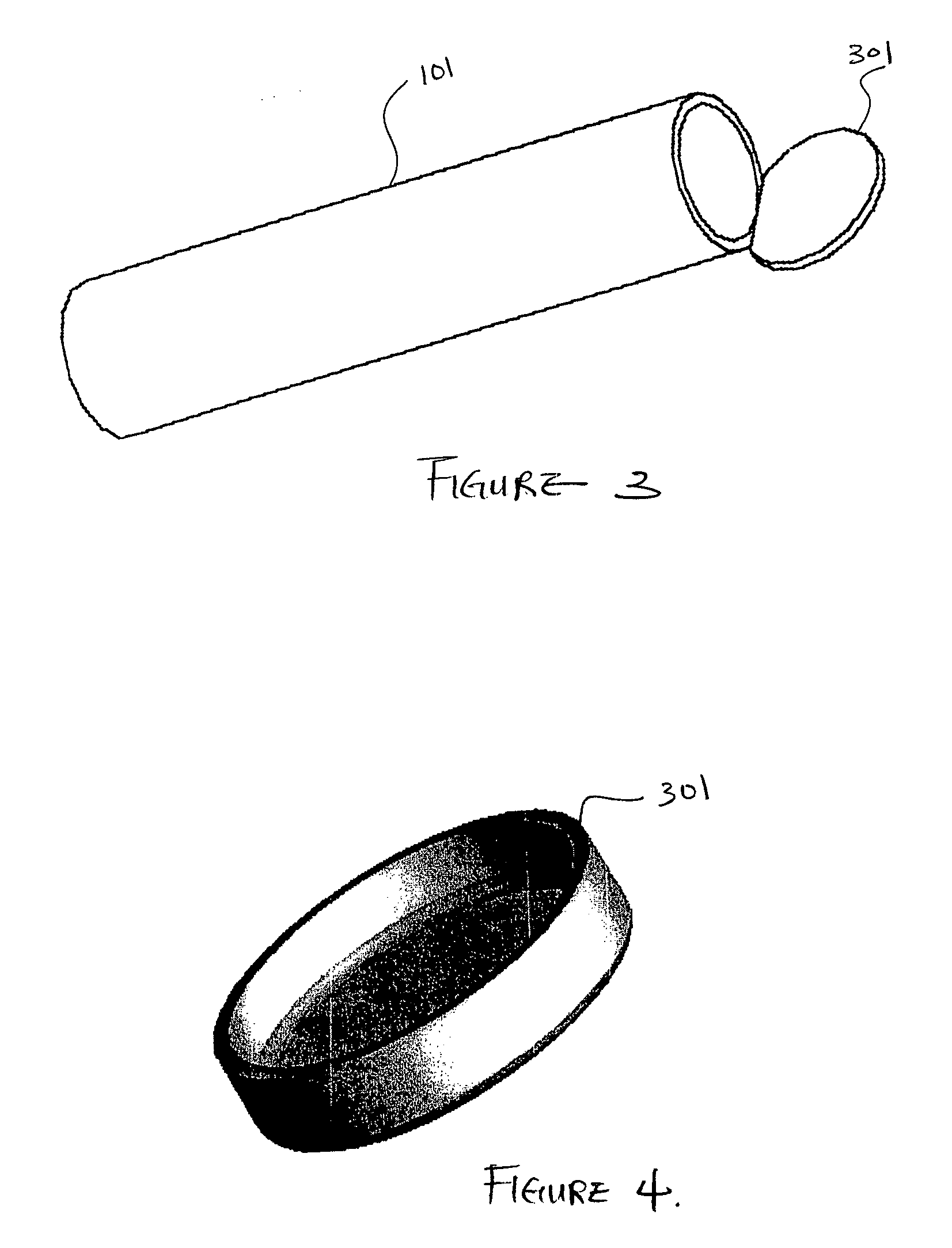Encapsulation device and methods of use
- Summary
- Abstract
- Description
- Claims
- Application Information
AI Technical Summary
Benefits of technology
Problems solved by technology
Method used
Image
Examples
Embodiment Construction
[0090]FIG. 1 is a three-dimensional perspective view of a membrane for use as an encapsulation device in one embodiment. Referring to FIG. 1, encapsulation membrane 101 is shown in tubular form. In one embodiment, the encapsulation device may be comprised of membrane 101 which includes expanded Polytetrafluoroethylene (ePTFE) that is made by expanding PTFE tubing under controlled conditions during the manufacturing process. The amount of expansion in ePTFE during manufacturing process is typically referred to as an internodal distance that typically ranges between 1 micron to 200 microns. The manufacturing process alters the physical properties of the PTFE tubing by creating microscopic pores in the structure of the PTFE tubing.
[0091] In this manner, the ePTFE differs from the conventional PTFE tubing in that the ePTFE material is microporous, soft, flexible, has a lower dielectric constant, increased linear strength, and improved biocompatibility. The structure of ePTFE is unique ...
PUM
| Property | Measurement | Unit |
|---|---|---|
| Viscosity | aaaaa | aaaaa |
| Shape | aaaaa | aaaaa |
| Adhesivity | aaaaa | aaaaa |
Abstract
Description
Claims
Application Information
 Login to View More
Login to View More - R&D
- Intellectual Property
- Life Sciences
- Materials
- Tech Scout
- Unparalleled Data Quality
- Higher Quality Content
- 60% Fewer Hallucinations
Browse by: Latest US Patents, China's latest patents, Technical Efficacy Thesaurus, Application Domain, Technology Topic, Popular Technical Reports.
© 2025 PatSnap. All rights reserved.Legal|Privacy policy|Modern Slavery Act Transparency Statement|Sitemap|About US| Contact US: help@patsnap.com



